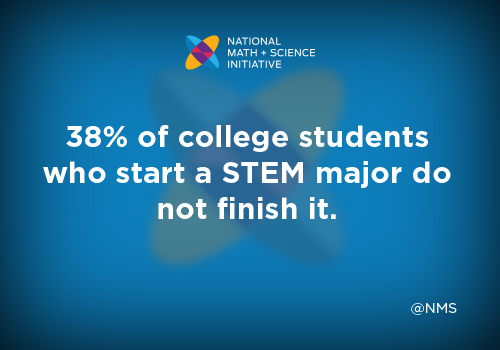Where are all the Engineers STEM Crisis Causing Major Shortage
Timothy Huneycutt |
August 14, 2013
 As we are moving into the new school year, the conversations surrounding the Common Core State Standards and STEM education have grown increasingly vibrant, and rightfully so. America is still very much in a STEM crisis, and it is going to take some time to get out of it. Until that happens, the conversations must continue. To do so, Rigzone.com – the “gateway to the oil and gas industry” – recently posted an article by Robin Dupre, which explores the different facets of the STEM crisis – as highlighted by NMSI, and elaborated upon by NMSI COO Dave Saba – and how the achievement gap in STEM education correlates to the shortage of skilled energy labor in America. “As of 2011,” writes Dupre, “26 million U.S. jobs – 20 percent of all jobs – require a high-level of knowledge in any one of the STEM fields.” And he goes on to say that there is a wide and startling gender gap in STEM fields as well, due to the possibility that women “may not believe their own technical skills are strong enough to pursue engineering careers.”
As we are moving into the new school year, the conversations surrounding the Common Core State Standards and STEM education have grown increasingly vibrant, and rightfully so. America is still very much in a STEM crisis, and it is going to take some time to get out of it. Until that happens, the conversations must continue. To do so, Rigzone.com – the “gateway to the oil and gas industry” – recently posted an article by Robin Dupre, which explores the different facets of the STEM crisis – as highlighted by NMSI, and elaborated upon by NMSI COO Dave Saba – and how the achievement gap in STEM education correlates to the shortage of skilled energy labor in America. “As of 2011,” writes Dupre, “26 million U.S. jobs – 20 percent of all jobs – require a high-level of knowledge in any one of the STEM fields.” And he goes on to say that there is a wide and startling gender gap in STEM fields as well, due to the possibility that women “may not believe their own technical skills are strong enough to pursue engineering careers.”
Federal News Radio takes the conversation a step further. On the program, Department of Defense reporter Jared Serbu gives voice to the worries of The Army Corps of Engineers, which is concerned about the future of the Corps once its current staff of talented engineers retires. “Out of 36,000 civilian employees,” Serbu reports, “and 600 military members, almost 19 percent of the Corps’ workforce is eligible for immediate retirement, and another 22 percent are eligible for early retirement.” Under better circumstances, this wouldn’t be a problem, but the pipeline of potential engineers is shrinking, which means the Corps won’t be able to replenish its numbers in full. Lack of diversity is another major issue currently facing the Corps, and Lt. Gen. Thomas Bostick, commanding general of the Corps believes it’s one that needs to be addressed. "We want an Army that reflects America. If you don't have enough of that, I think it can have an impact on the organization."
So how exactly is NMSI rectifying these achievement gaps in STEM education? Well, for starters:
•We are now training elementary school teachers to bring rigorous, engaging coursework to grades 3-5. This absolutely necessary, because it will establish the strong academic foundation that students need in order to be successful and confident throughout the learning process, and it will help with vertical alignment across the grade levels. Students shouldn’t have to question whether they are going to receive a good education that will prepare them for college – it should be expected, and we are working to ensure those expectations are met.
•We also recognize the need for STEM support among minorities and the importance of inspiring girls to pursue STEM careers, which are both categories of people who are grossly underrepresented in these fields. Instead of letting groups slip through the cracks, we must engage, encourage, and support more women and minorities in STEM education. We are already seeing tremendous results with our AP program, and we are committed to expanding this program across the nation.
•And to help reach President Obama’s call for 100,000 qualified science, technology, engineering, and math teachers by 2020, our UTeach Program is producing thousands of incredible, qualified teachers who stay in the field longer than the average American teacher. These teachers are making a huge difference, because they are the people inspiring our students and encouraging the next generation of engineers to pursue STEM degrees.
NMSI is dedicated to fixing our country’s education system by providing the support our students and teachers need. If we want to stay globally competitive, we must straighten this ship and get STEM education back on track. It’s going to take some time, but we’re in it for the long haul.